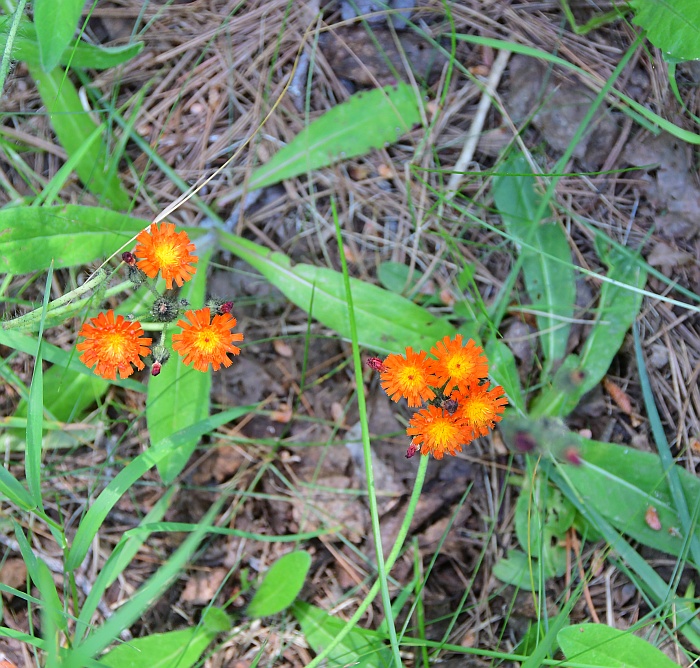Hieracium aurantiacum L.
Devil's Paintbrush, Orange Hawkweed

Introduced
CC = *
CW =
MOC = 0
© SRTurner
Hieracium aurantiacum L.Devil's Paintbrush, Orange Hawkweed | |
 |
Introduced CC = * CW = MOC = 0 |
© SRTurner |
|
Family - Asteraceae/Cichorieae Habit - Perennial forb with stolons or shallow rhizomes. Sap milky.
Stem - Ascending to erect, to 35 cm, moderately pubescent with stiff hairs, these often dark in color and gland-tipped.
Leaves - Basal and usually a few cauline, alternate, simple. Basal leaves spatulate to oblanceolate, to 7 cm long, entire, pubescent. Stem leaves few to none, elliptic to oblanceolate, sessile, pubescent.
Inflorescence - Terminal clusters of 2-7 heads. Peduncles stipitate-glandular.
Heads - Ligulate. Involucral bracts 13-30, the apices tapered and pointed, the surfaces hairy and glandular.
Florets - Ligulate florets 25-120, the corollas orange (drying scarlet to purplish), 10-14 mm long. Pappus of 25-30 white bristles 3.5-4.0 mm long, in a single series.
Flowering - May - August. Habitat - Fields, lawns, roadsides, disturbed areas. Origin - Europe. Lookalikes - Hieracium caespitosum. Other info. - This attractive species was first grown in the U.S. as an imported ornamental, probably in Vermont some time prior to 1875. It soon escaped cultivation and spread throughout New England, Michigan, and Wisconsin. Currently it is found mostly in northern states and is sometimes considered a nuisance weed in those areas. It can invade moist areas such as logged clearings, cedar swamps, marshy ground, lakeshores, etc. It was recently reported in Missouri for the first time by Doug Ladd (Missouriensis 2023, 32-36), possibly as an escape from nearby gardens. It could also be spread by hitchhiking on clothes and shoes of campers in northern regions, where it is found in abundance. The plant apparently does not thrive in lower elevations and latitudes, and is not expected to become a problem in our state. Photographs taken near Hebard Park, [upper peninsula of] MI, 7-8-2023 (SRTurner). |